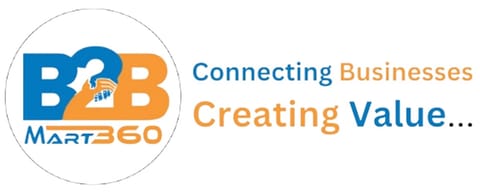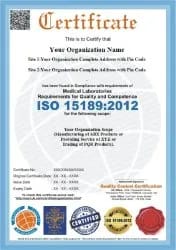₹8,000
₹8,000
₹8,000

What is ISO 15189:2012 Certification
It can be used by medical laboratories in developing their quality management systems and assessing their own competence. It can also be used for confirming or recognizing the competence of medical laboratories by laboratory customers, regulating authorities and accreditation bodies.
This standard is for Medical laboratories that define requirements for quality and competence. This is an international standard that specifies the quality management system requirements particular to medical laboratories. The standard was developed by the International Organization for Standardization's Technical Committee 212 (ISO/TC 212). The ISO 15189 is based on ISO/IEC 17025 and ISO 9001; it is a unique document that takes into consideration the specific requirements of the medical environment and the importance of the medical laboratory to patient care.
ISO 15189:2012 Structure
This standard was first published in 2003, and it was 2nd revised in 2007 and current revision is 2012. In this standard 5 clauses & Three Annexure are as follows:
Clauses
1. Introduction & Scope
2. References
3. Terms & Condition
4. Management Requirements
5. Technical Requirements Clauses
Annex A-Correlation with ISO 9001:2008
Annex B-Comparison of ISO 15189:2007
ISO 15189 is applicable to following types of laboratories:
• Microbiology and SerologyAdvantages:
A. For Medical Laboratories
provides an opportunity for external perspectives on the laboratory’s practice, can prevent the unnecessary duplication of information gathering on performance often required by regulatory bodies, encourages the sharing of best practice,reduces risk, and Provides international recognition.B. For Healthcare Regulators
provides an independent assurance of quality and safety, provides a mechanism for measuring quality improvement, supports consistency in the quality of care, encourages innovation
C. For Patients
consistency in the quality of care, up-to-date technologies and its procedures and techniques reflect current best practice, Staff providing the service is competent to undertake the tasks they perform.


What is ISO 15189:2012 Certification
It can be used by medical laboratories in developing their quality management systems and assessing their own competence. It can also be used for confirming or recognizing the competence of medical laboratories by laboratory customers, regulating authorities and accreditation bodies.
This standard is for Medical laboratories that define requirements for quality and competence. This is an international standard that specifies the quality management system requirements particular to medical laboratories. The standard was developed by the International Organization for Standardization's Technical Committee 212 (ISO/TC 212). The ISO 15189 is based on ISO/IEC 17025 and ISO 9001; it is a unique document that takes into consideration the specific requirements of the medical environment and the importance of the medical laboratory to patient care.
ISO 15189:2012 Structure
This standard was first published in 2003, and it was 2nd revised in 2007 and current revision is 2012. In this standard 5 clauses & Three Annexure are as follows:
Clauses
1. Introduction & Scope
2. References
3. Terms & Condition
4. Management Requirements
5. Technical Requirements Clauses
Annex A-Correlation with ISO 9001:2008
Annex B-Comparison of ISO 15189:2007
ISO 15189 is applicable to following types of laboratories:
• Microbiology and SerologyAdvantages:
A. For Medical Laboratories
provides an opportunity for external perspectives on the laboratory’s practice, can prevent the unnecessary duplication of information gathering on performance often required by regulatory bodies, encourages the sharing of best practice,reduces risk, and Provides international recognition.B. For Healthcare Regulators
provides an independent assurance of quality and safety, provides a mechanism for measuring quality improvement, supports consistency in the quality of care, encourages innovation
C. For Patients
consistency in the quality of care, up-to-date technologies and its procedures and techniques reflect current best practice, Staff providing the service is competent to undertake the tasks they perform.

